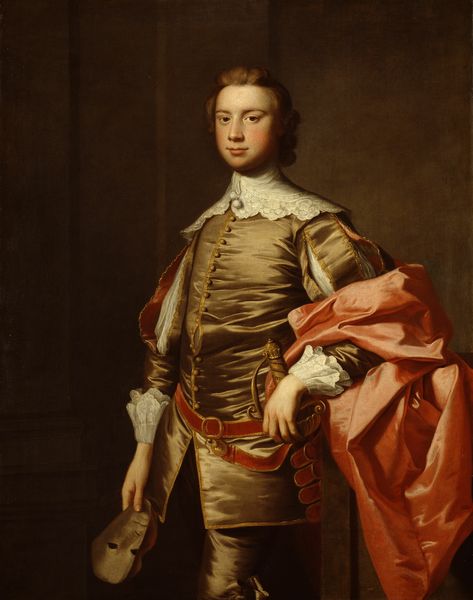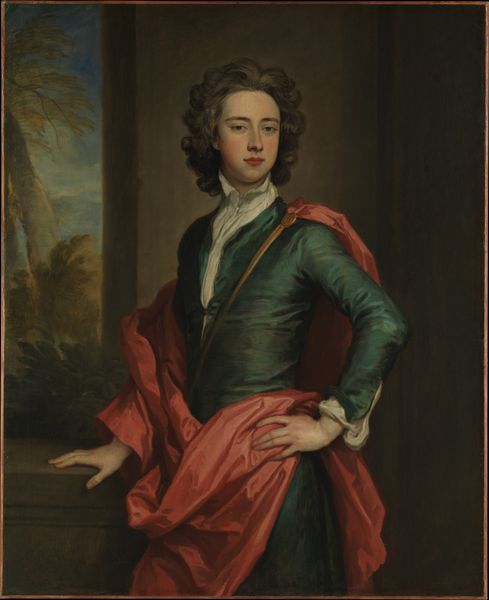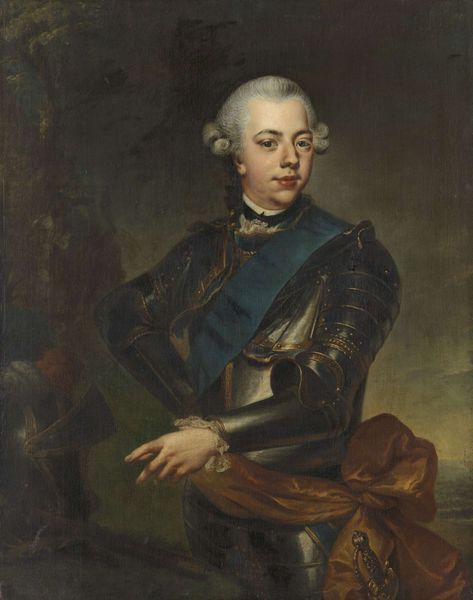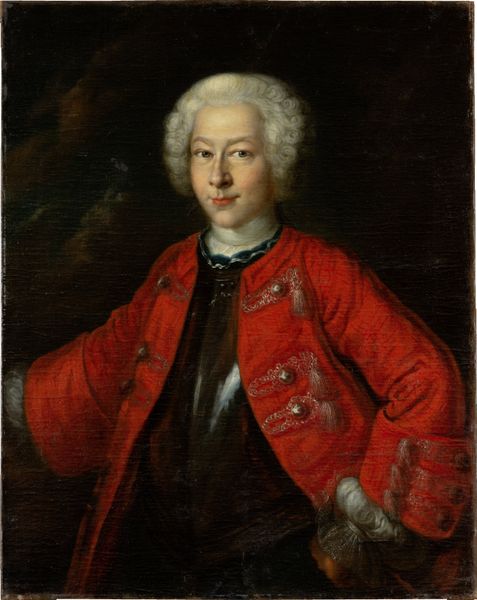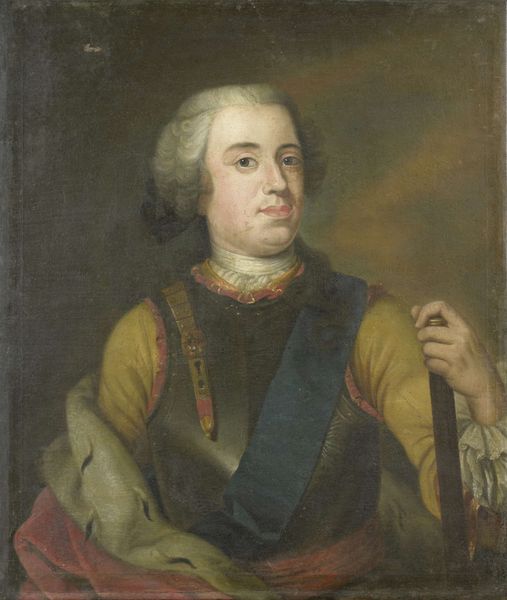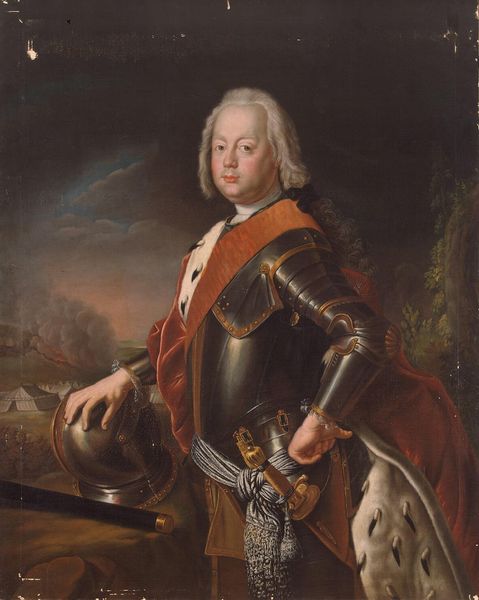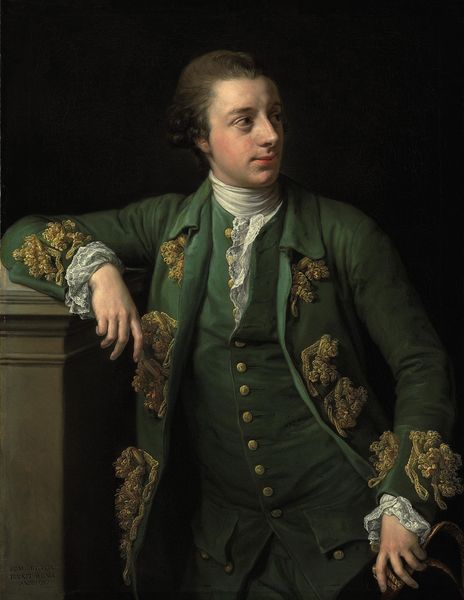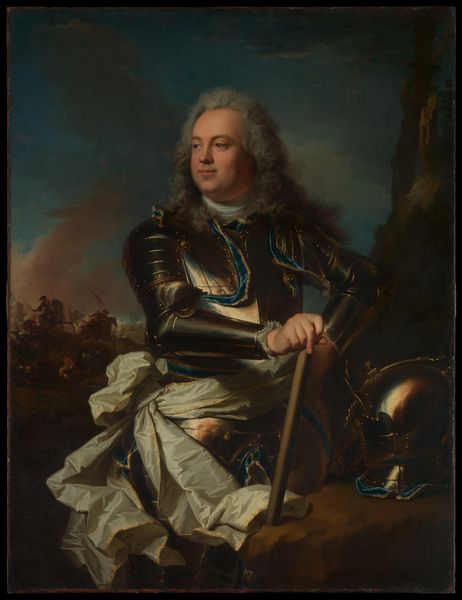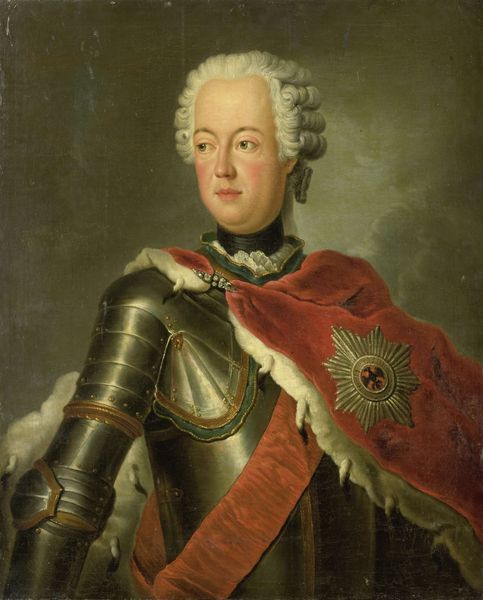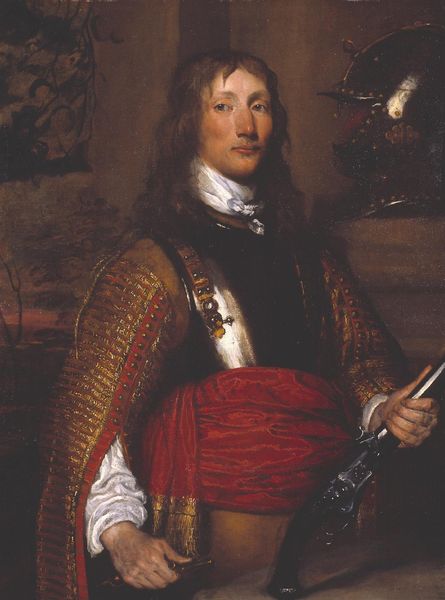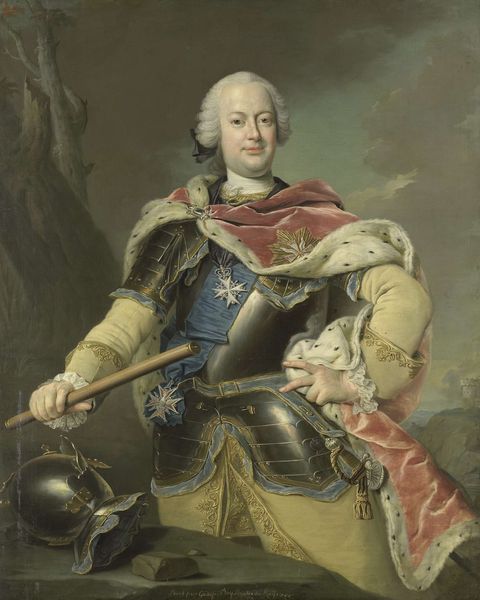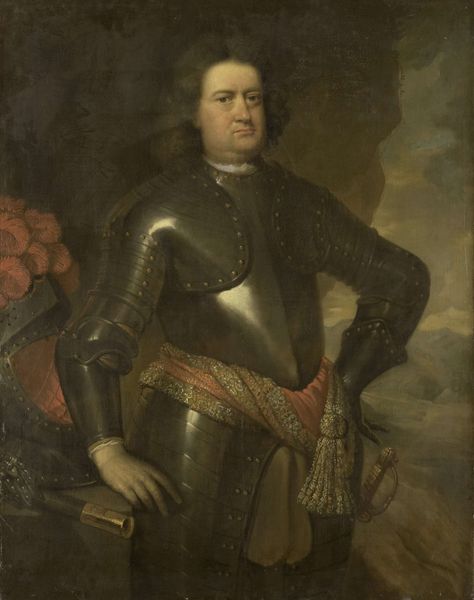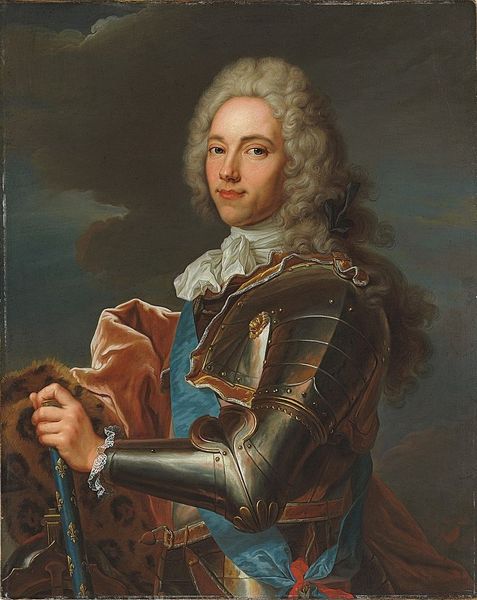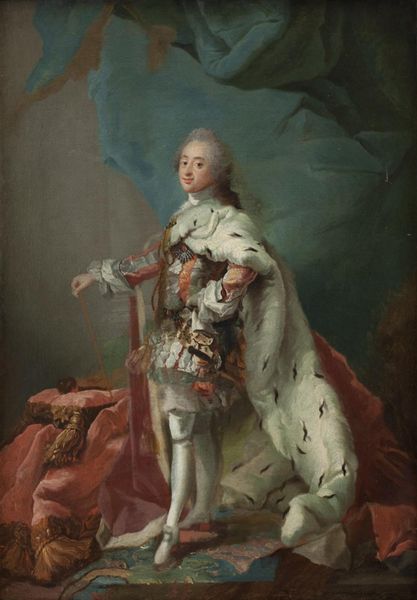
painting, oil-paint, oil-on-canvas
#
portrait
#
baroque
#
painting
#
oil-paint
#
history-painting
#
italian-renaissance
#
italy
#
oil-on-canvas
#
portrait art
#
fine art portrait
#
rococo
#
celebrity portrait
Dimensions: 38 1/2 x 28 1/4 in. (97.79 x 71.76 cm) (canvas)46 1/4 x 36 1/4 x 4 1/4 in. (117.48 x 92.08 x 10.8 cm) (outer frame)
Copyright: Public Domain
Editor: Here we have Pompeo Batoni's "Portrait of John Woodyeare," created in 1750. It's an oil-on-canvas piece. I’m immediately struck by the subject’s confident pose and the rich details of his clothing. What stands out to you about this work? Curator: Well, let's consider the social context of portraiture in the 18th century. This wasn't just about capturing a likeness. It was about constructing an identity, projecting status, and power. Who was John Woodyeare, and what message was he trying to send with this image? The Italian Renaissance was fading but the styles still lingered, but also, look at the Baroque and Rococo influences. What do they convey about the societal expectations? Editor: I hadn't thought about the constructed identity aspect so much. His clothes—that elaborate coat and the sword—definitely speak to a certain status. Is there a possible critique of class that can be suggested? Curator: Exactly! These Grand Tour portraits, which were fashionable at the time, often depicted wealthy young men acquiring culture in Italy. But who gets to participate in this "cultural exchange?" What about the perspectives of those who don't have the means or privilege? There are undercurrents of exclusion that this work participates in, or possibly attempts to subvert by means of his expression? Is there an attitude, like hubris? How might those in Woodyeare’s circle perceive his presentation? Editor: That's a fascinating point. Seeing it as part of a larger conversation about privilege really changes how I perceive the portrait. I can see it is part of a wider, problematic system of power. Curator: Precisely! It's not just about aesthetics; it's about engaging critically with history and asking who benefits from certain representations and who is excluded. It helps bring art history in tune with contemporary thought, giving a renewed cultural context that affects today's societal attitudes. Editor: Thank you so much. This has helped me realize the depth of history present in the portrait. Curator: And you've given me renewed enthusiasm about these portraits, allowing myself to think from a young student's lens, open and fresh.
Comments
minneapolisinstituteofart almost 2 years ago
⋮
Pompeo Girolamo Batoni was the preeminent portrait painter in Rome in the 1700s and was celebrated for his lively, flattering likenesses. His clients included emperors and popes, but his bread and butter were people like John Woodyeare: young British gentlemen, milordi, traveling through Rome on their grand tours. Woodyeare was just twenty-two when he visited Rome and had this portrait painted. The picture omits the antique marbles and city views Batoni inserted into his later souvenir portraits and focuses instead on Woodyeare’s debonair appearance and clothes. Gentlemen like Woodyeare still carried swords, but otherwise his clothing—a gold-braided green tunic, fur-trimmed jacket, and purple sash—is fanciful and probably inspired by the exotic uniforms of the hussar soldiers of continental Europe.
Join the conversation
Join millions of artists and users on Artera today and experience the ultimate creative platform.
